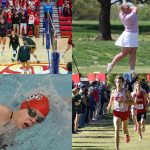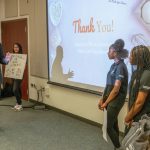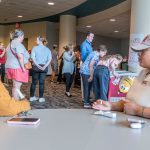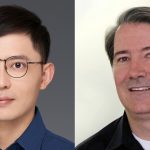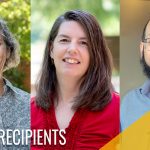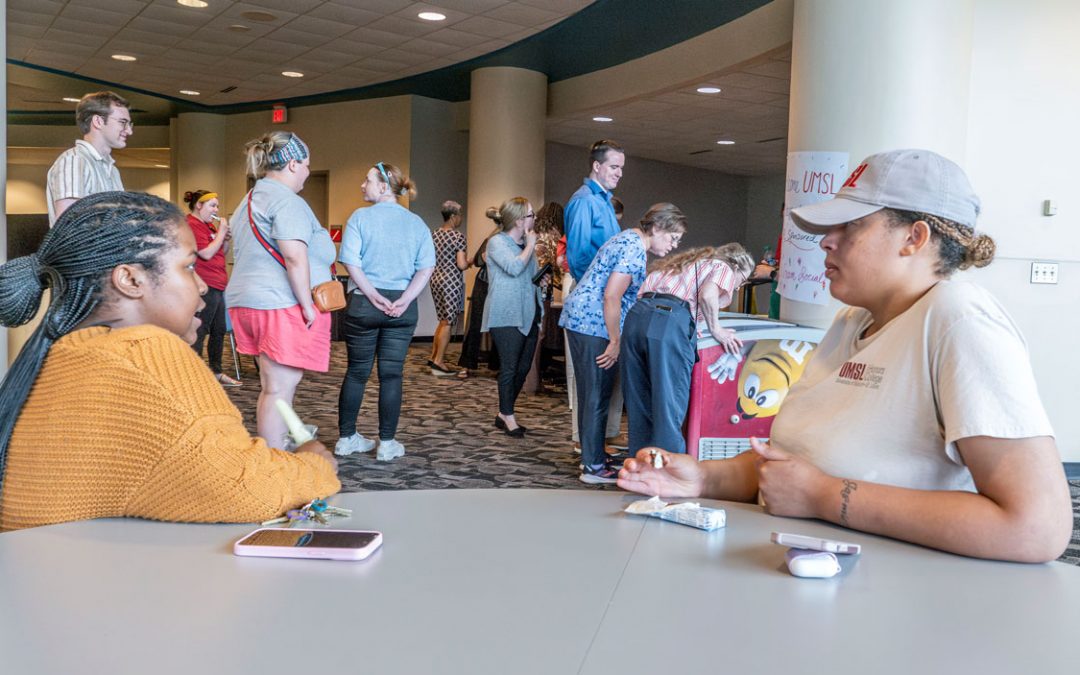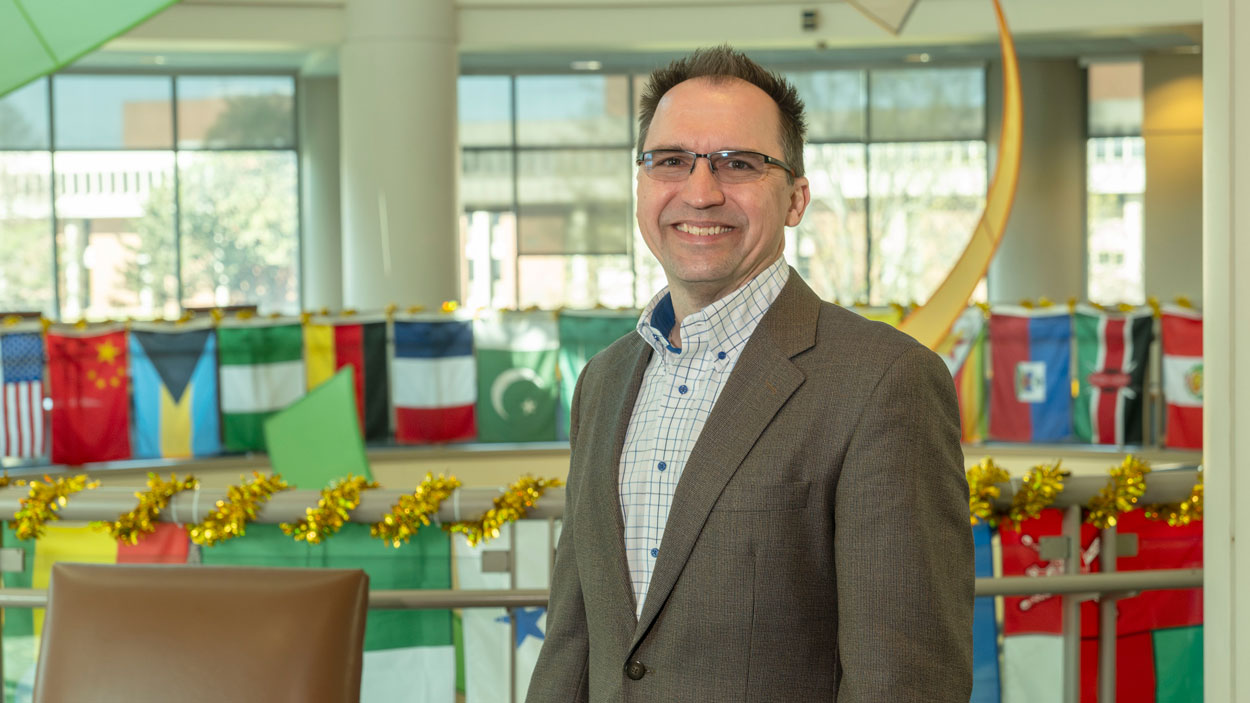
David Gerstenecker began his new job as UMSL’s chief information officer after spending more than 26 years working in information technology at the University of Illinois at Urbana-Champaign. (Photo by Derik Holtmann)
David Gerstenecker officially began his new role as the chief information officer at the University of Missouri–St. Louis on Monday.
He’s grateful the job leading Information Technology Services has allowed him to return to the region where he spent his youth. Gerstenecker grew up on a horseradish farm across the river in Edwardsville, Illinois, before attending college at the University of Illinois and ultimately building a career in information technology on the campus in Urbana-Champaign.
“Every time I see the Arch, I just feel at home,” said Gerstenecker, who’s had his car radio tuned to St. Louis Public Radio over the past couple of weeks when he’s been out and about and not unpacking boxes at his new home.
He was ready to make a change after more than 26 years at the university, including the past decade serving as the director of IT at the College of Agricultural, Consumer and Environmental Sciences.
“It just got to a point where I was realizing I needed to figure out what was next for me,” Gerstenecker said. “I was looking at different opportunities, looking at what areas we wanted to move to. This area was high on the list, so I kept my eyes open. I was very excited when the recruiter reached out and let me know about this job.”
UMSL Daily spoke to Gerstenecker about what else resonated with him about UMSL, how he got into IT and what challenges and opportunities he sees ahead in his new role.
Other than the chance to be closer to where you grew up, what attracted you to your new position at UMSL?
It seemed right up my alley in terms of the next step in my career, and as I started looking at and reviewing materials that they had provided, the “Transform Lives” messaging really connected. I’ve used that for probably a decade. I feel like I transform lives by connecting brilliant minds to the technology resources they need to make groundbreaking discoveries and teach the next set of brilliant minds for a healthier community. That has been what I tell people I do. That connection just really spoke to me.
Also, as I went through the interview process, there seemed to be a desire for mentorship happening within the ITS organization, and mentoring is something I’m passionate about. I think that everybody really should have at least one mentor, more if possible. Really developing others seemed like an opportunity there that I was excited about.
Your undergraduate degree was in agricultural engineering. How did you find your way into IT?
I grew up in Edwardsville. I grew up on a farm. Early on, I knew I wasn’t going to be a farmer. But I thought I was really good at math, so engineering really attracted me. Combining those two things led me to that degree, which also led me to Illinois, which has a very strong agricultural engineering program. I was also interested in computers. I still remember I was so excited as a kid when I got Print Shop, and I unboxed it on a 5¼-inch floppy disk. When I was at Illinois, the internet was really coming into its own. I was looking at student summer jobs, and it turned out I actually got one there on campus doing computer support. I realized how much I could combine my excitement about computers – my understanding and knowledge about them – with helping others. It was a realization that, as much as I really enjoyed engineering, I felt like moving into IT was an opportunity to connect more with people. When I graduated, I decided to continue on that path. Fortunately, they were able to move me into a permanent position, and I have had a long career there moving and advancing up the ladder.
There probably haven’t been many stale moments working in IT over the last 25 years, right?
That’s right. Technology, just in the word itself, is all about finding different ways to do things better. There’s always this change. I really like the iterative approach – this idea that as we experience change, as we see something new coming, whether that’s a new software or a new technology or hardware, a new way to do things, process improvement, to give it a try. Let’s figure out a way to test it out, see what we can do to try it, and understand that sometimes we’re going to try things and they aren’t going to work. But we’ve learned something from that. That’s part of the excitement, right? Seeing what works.
That’s one of the things I’m looking forward to, seeing what works for UMSL. There’s a multitude of solutions because people are different, universities are different, companies are different. I know a lot of what worked in my job at the University of Illinois, but I’m coming in with a big open mindset in terms of what’s working here at the University of Missouri–St. Louis. What can we bring in? Some of the things that worked at U of I are not going to work here. So, I want to be able to understand and try different things.
The less fun part is a lot of the legal stuff. Software licensing is changing and procurement and the cost of things. There’s a lot of different aspects. I always like to put a three-year timer on things, so we can review them for relevance. I think we live in a day and age where, especially in information technology, people shouldn’t get too attached to the specifics of what we’re using because it changes.
What similarities do you see between UMSL and the University of Illinois?
Illinois has this similar system. Illinois has three campuses. Missouri has four campuses. Talking to some of the colleagues that have worked here in Missouri, the system is more of a system. I’m really excited about seeing how we work together in terms of figuring out what we need in St. Louis, what Columbia needs, what Rolla needs and what Kansas City needs. One of the things I’m excited about is these CIO meetings, where the CIOs from each of the campuses will get together and talk about these things and figure out changes and what’s next.
What are some of the biggest challenges you expect to encounter in your new role?
Knowing I’ve got 50-plus people that are going to be on my team and that are new to me. Getting to know them and understanding them, understanding how they work. My intention is to do a lot of listening and writing down notes in my early time here. I know that we’re actively transforming the landscape, the physical landscape, of campus with all the moves. I’ll be having regular meetings with Matt Prsha from facilities and that interaction with how IT needs to be part of all the changes to the buildings and campus infrastructure. That, I know, is one of the opportunities and challenges that is before us and before me. I’ll be relying on the expertise of the people that are already here and part of that project.
I also want to be sure that the campus, the university, knows about ITS as a resource and that we are a trusted partner in making their research and their teaching and the activities of staff all be successful.
I’m very people-focused. Even though I’m in a job and a role that has “information” in the title, we wouldn’t need information if not for people, right? We wouldn’t need computers if not for people. For me, technology is about how we, as people – and the people that ITS is working with – can achieve their goals. I love interacting with people, so I’m excited about this whole campus of people to get to know and understand.


